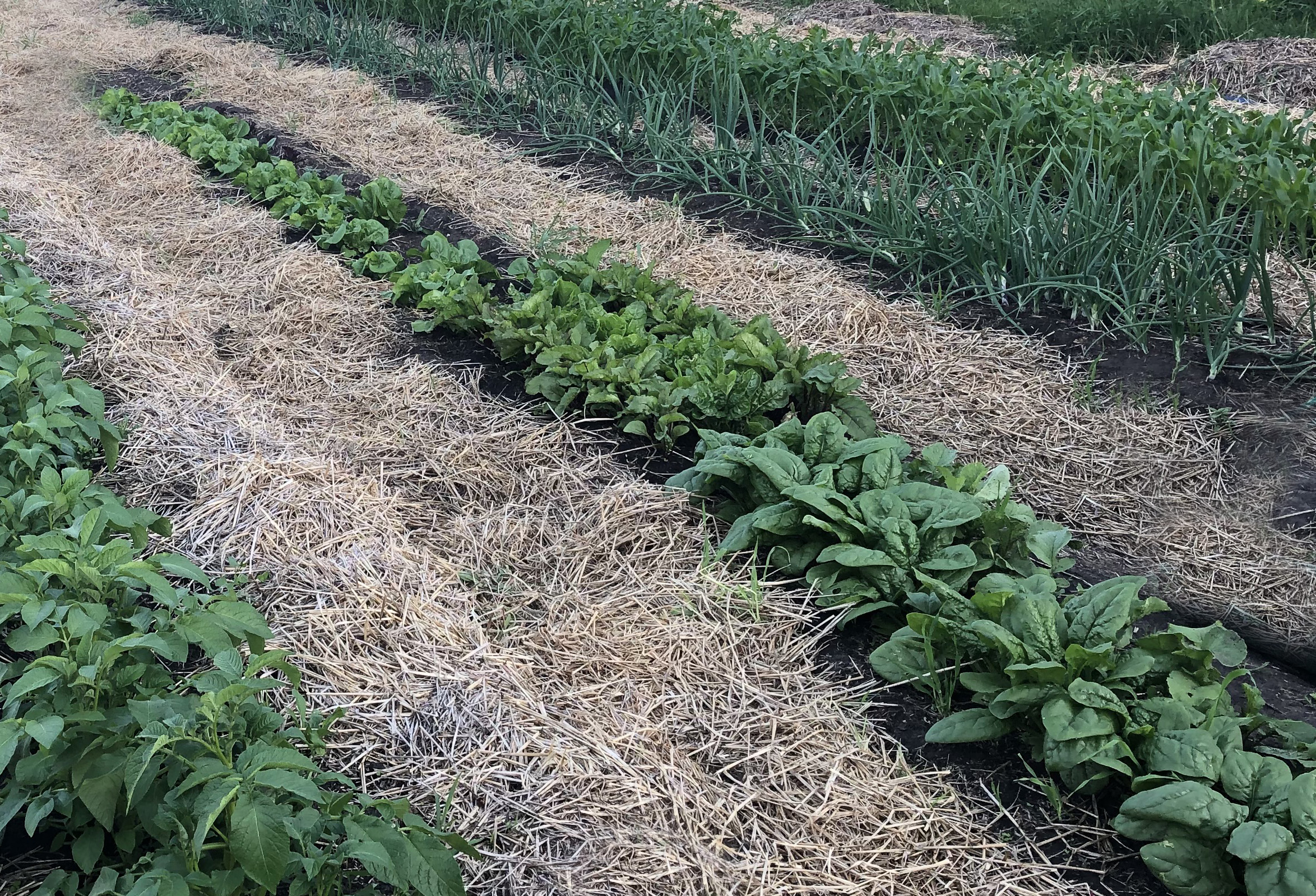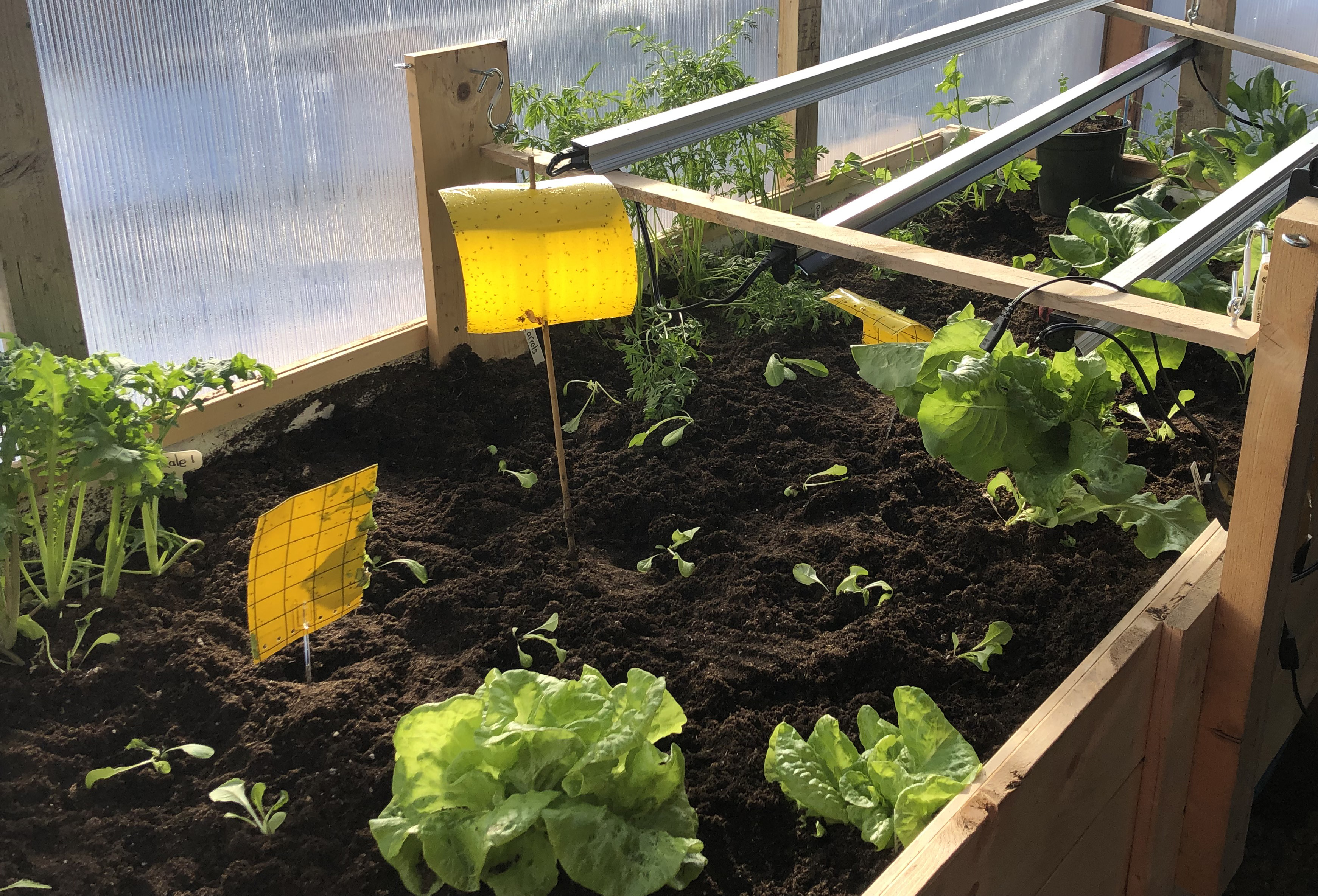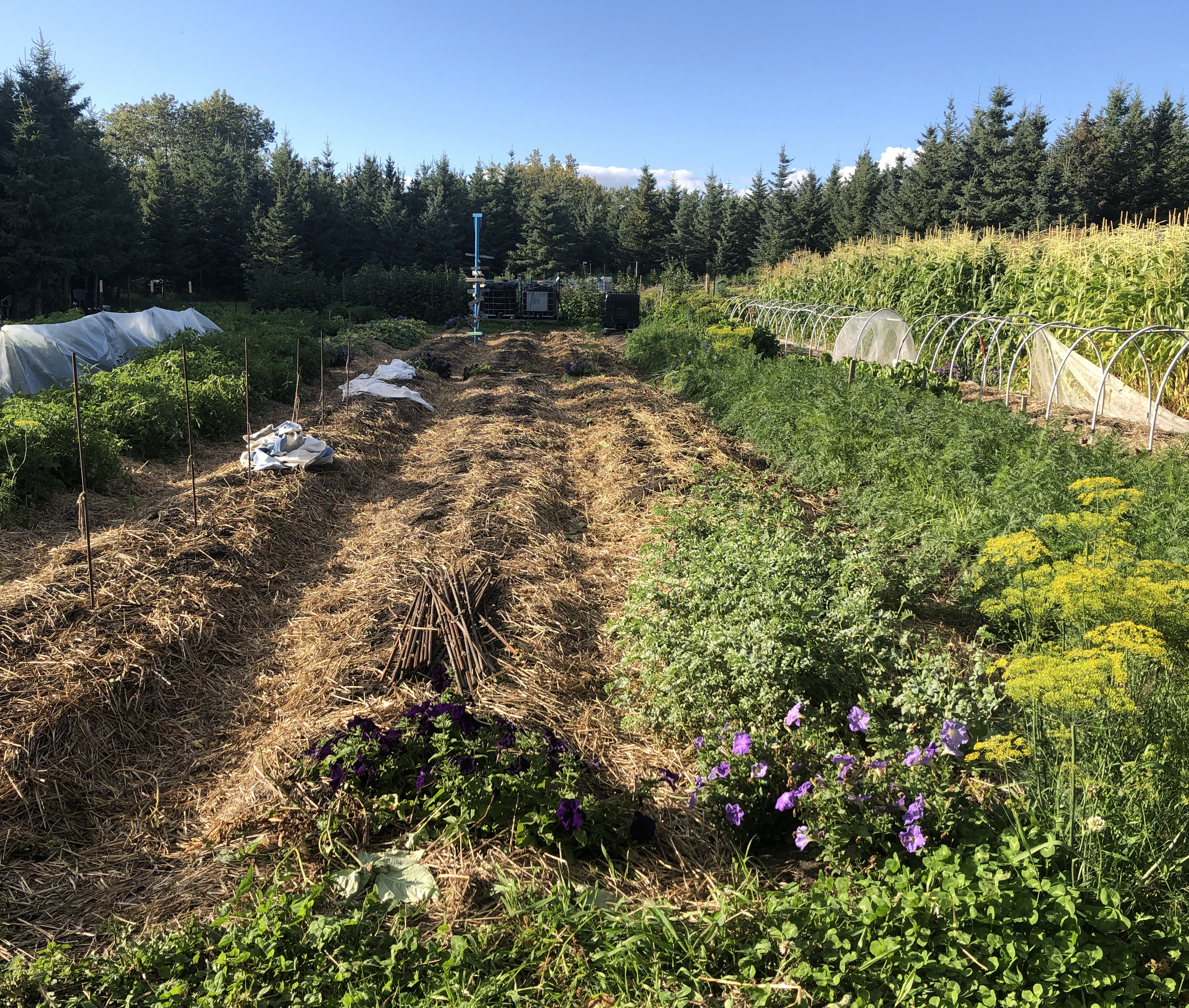
Succession planting
No till gardening is a system of gardening where the soil is mulched to prevent soil erosion, conserve water and reduce the pressure of weeds. Succession planting can increase yields and provide fresh vegetables across the entire season instead of just in a single harvest.
What is succession planting?

Succession planting is a method of growing that ensures harvest all through the growing season. Rather than harvesting a crop once in summer, succession planting will start yielding crops earlier in the season and continues through to the end of the season. This can allow an increase in yields without an increase in space, protect against crop loss due to storm damage or insect infestation and provide fresh produce all across the season.
Succession planting isn't just for an outdoor garden, microgreens and greens can be succession planted to provide fresh greens all winter long!
The goal with succession planting is to create multiple harvest dates throughout the growing season. This can be achieved using a number of methods:
- succession planting with different planting dates
- succession planting by mixing transplants and direct sown dates
- succession planting with different varieties with different maturity dates
- harvesting short season crops early
Succession planting with different planting dates
Succession planting can be done by repeatedly planting the same variety of the same vegetable to guarantee fresh harvest all the way through summer.
Lettuce for example can be planted every two weeks through summer to have fresh lettuce all summer long.
Leave one row in your garden area dedicated to succession planting. Determine how much you will eat in a two week period. If it's 10 heads of lettuce, then plant 12 heads of lettuce every two weeks through summer beginning as soon as the soil temperature hits 5C.
You can succession plant any short season crop like lettuce, kale, spinach, radish, salad greens, beets and baby carrots.
Succession planting with transplants and direct seeding
For longer season crops, you can succession plant to ensure longer harvest seasons by staggering transplanting dates.
For example, to have fresh broccoli through the season, sow transplants April 15, April 30 and May 15. Plant into the garden on June 1 to ensure 3 harvests.
You can do succession transplanting with all types of tomatoes, broccoli, cauliflower, cabbage and even peppers!
Succession planting with different varieties
Succession planting can also be done by using three different culitvars of the same plant with differing maturity dates. For example, planting an early, mid and late cultivar of peas or green beans will ensure a longer harvest period through summer.
This type of succession planting offers two advantages; at any given point in time in the garden, only a third of the pea crop would be lost to a hail storm as the hail can damage the pea pods. If the storm hits while the early peas are forming pods, the mid and late season plants may have some hail damage to their leaves but reproductive growth would not be affected and the crop still saved.
The other advantage succession planting different culitvars of the same vegetable offers is that the harvest window is extended. Instead of picking 300' of peas, shelling and preserving them in a two week window, 100' of peas can be harvested and then in two weeks, another 100' is ready to go. This spreads out the amount of work that occurs in a short amount of time making it more feasible for a single gardener to harvest a large quantity of peas.
This type of succession can be used with any garden vegetable that is grown in a garden. When choosing seeds for the garden, look for an early, mid and late season cultivar of the same vegetable.
Succession planting short season crops

Short season vegetables like lettuce, kale, radish, beets, spinach and even salad greens can be planted in the garden rows where peas or beans were growing and have finished producing. This opens additional space for the short season vegetables to fill in and increase yields of the garden. If you pick baby potatoes, instead of leaving an empty space, plant some lettuce in it's place.
One thing to keep in mind with the shorter season plants is that not all of them need to reach "maturity" to be consumed. Lettuce for example could be eaten as greens in 14 to 30 days instead of letting it reach a full head at maturity. Swiss chard (beet leaves) could be harvested before the beet is fully mature.
To manage this type of succession planting, monitor your maturity dates carefully. 30 days prior to your first fall average frost date, plant greens to enjoy one more last harvest before frost hits! You can even prolong this harvest with the use of frost covers.
Succession planting in indoor growing
Growing indoors can make use of succession planting as well! If you grow tomatoes, cucumbers or even peppers indoors through the winter months, check maturity dates on the varieties you are growing! You may be starting these plants in July so you can be harvesting fresh cherry tomatoes for holiday meals.
With microgreens and salad greens, start these regularly every week or two weeks depending on how much your family can consume through winter. Start one week prior to your last average frost date in the fall to ensure you have a continued harvest of greens!
High density planting

High density planting is a great use for space especially when coupled with succession planting.
Leave an empty row and every two weeks through the growing season, plant ten feet of whatever combination of short season crops that you enjoy - this could be spinach, beets and kale or radish, salad greens and spinach. Fill in the row with the seeds and harvest when ready.
This works best when maturity dates match - look for similar maturity dates for all short season crops when choosing seed varieties!

